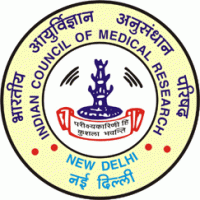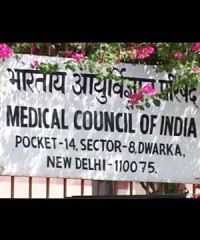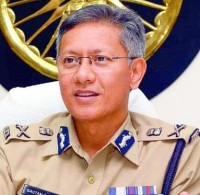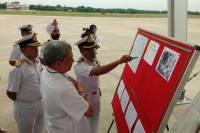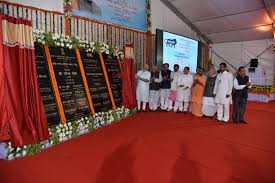Indian Council of Medical Research (ICMR) has undertaken a survey on diabetes viz. ICMR India Diabetes (ICMR-INDAB) Study on the prevalence of diabetes. It is an ongoing study and current results available from 15 States/UTs indicate overall prevalence of Diabetes which varies from 4% to 13%.
As reported by ICMR, based on the “Three-year Report of the Population Based Cancer Registries: 2012-14”, the estimated incidence and mortality of cancer cases in India for all sites is as under:-
| Year | Estimated incidence of Cancer Cases | Estimated mortality of Cancer cases |
| 2013 | 1270781 | 641455 |
| 2014 | 1328229 | 670541 |
| 2015 | 1388397 | 701007 |
ICMR has informed that according to the Report of National Commission on Macroeconomics and Health, there were 380 lakh cases of Cardiovascular Diseases (CVDs) in the year 2005 and these were estimated to rise to 641 lakh cases in the year 2015. The number of deaths from CVDs was estimated to more than double during this period.
The data available from the Indian Council of Medical Research-India Diabetes (INDIAB) Study Phase I done in the rural and urban settings in 3 States and 1 Union Territory viz., Tamil Nadu, Maharashtra, Jharkhand and Chandigarh for hypertension indicates the range of prevalence of hypertension from 19.8% to 31.5 %.
In 2005, the National Commission on Macroeconomics and Health reported that 10-20 million people (1-2% of population) suffered from severe mental disorders such as schizophrenia and bipolar disorder and nearly 50 million (5% of population) suffered from common mental disorders such as depression & anxiety, yielding an overall estimate of 6.5% of the population.
The major factors contributing to the Non-Communicable Diseases include inappropriate life styles, tobacco use, obesity, inappropriate diet, physical inactivity, alcohol consumption, high blood pressure, air pollution etc.
Government of India has launched National Programme for Prevention and Control of Cancer, Diabetes, Cardiovascular Diseases and Stroke (NPCDCS) which is implemented for interventions up to District level under the National Health Mission. NPCDCS has focus on awareness generation for behaviour and life-style changes, screening and early diagnosis of persons with high level of risk factors and their treatment and referral (if required) to higher facilities for appropriate management for Non-communicable Diseases. Under NPCDCS, diagnosis and treatment facilities for common NCDs are provided through different levels of healthcare by setting up NCD Clinics at District Hospitals and Community Health Centres (CHCs).
Recently, on 22nd June, 2016, Operational Guidelines have been released for implementing population level screening for diabetes, hypertension & common cancer viz. breast, cervical & oral. The guidelines include screening for risk factors of these diseases. Such screening will generate awareness on risk factors of common NCDs.
To address the burden of mental disorders, the Government of India is implementing the National Mental Health Programme (NMHP) and the District Mental Health Programme (DMHP) with the objectives to :-
- Provide mental health services including prevention, promotion and long-term continuing care at different levels of district health care delivery system.
- Augment institutional capacity in terms of infrastructure, equipment and human resource for mental healthcare.
- Promote community awareness and participation in the delivery of mental health services, and
- Broad-base mental health into other related programmes.
For holistic development of adolescent population, the Ministry of Health and Family Welfare in 2014 launched Rashtriya Kishor Swasthya Karyakram (RKSK) to reach out to 253 million adolescents – male and female, rural and urban, married and unmarried, in and out of school adolescents with special focus on marginalized and underserved groups. The six thematic areas covered under RKSK include Non-Communicable Diseases.
Presently seven Affordable Medicines and Reliable Implants for Treatment (AMRIT) outlets have been opened at Central Government institutions with an objective to make available Cancer and Cardiovascular Diseases drugs and implants at discounted prices to the patients. Approval has also been accorded for opening of such outlets at 8 more Central Government institutions. M/s HLL Lifecare Ltd, which is a 100% Government of India owned PSU under this Ministry, has been directed to contact all States which may like to open AMRIT outlets in major State Government hospitals/institutions. As per the approval accorded for setting up AMRIT, the prices of the products are to be reasonable and significantly lower than the market price.
National List of Essential Medicines (NLEM) contains medicines for major NCDs. Drugs Price Control Order (DPCO), 2013 fixes ceiling price for these medicines.
Several awareness initiatives have been undertaken by the Government including observance of World Diabetes Day, organizing of screening for major NCDs including blood pressure and major awareness events at occasions such as the India International Trade Fair (IITF), Delhi and use of print, electronic and social media, etc. In addition NPCDCS supports awareness generation activities to be undertaken by the States.


